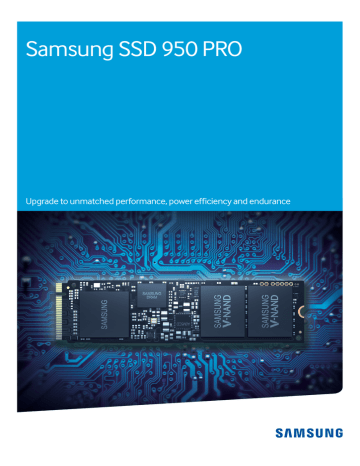

- #SAMSUNG NVME DRIVER EXTRACTED INSTALL#
- #SAMSUNG NVME DRIVER EXTRACTED DRIVERS#
- #SAMSUNG NVME DRIVER EXTRACTED UPGRADE#
- #SAMSUNG NVME DRIVER EXTRACTED FOR WINDOWS 10#
- #SAMSUNG NVME DRIVER EXTRACTED WINDOWS 10#
nvme 0000:04:00.0: AER: PCIe Bus Error: severity=Corrected, type=Physical Layer, (Receiver ID) pcieport 0000:00:1d.0: AER: Error of this Agent is reported first pcieport 0000:00:1d.0: AER: PCIe Bus Error: severity=Corrected, type=Physical Layer, (Receiver ID) Put them on your SSD, for speed.Pcieport 0000:00:1d.0: AER: Corrected error received: 0000:00:1d.0
#SAMSUNG NVME DRIVER EXTRACTED INSTALL#
Install / configure any other software, applications, games, etc you want.

Install all of the applications you downloaded in Step 3.ġ5.
#SAMSUNG NVME DRIVER EXTRACTED DRIVERS#
You can choose avoid rebooting until all drivers are installed, and then reboot at the end.ġ4. Copy over all of the Dell Drivers you downloaded in Step 2. This is undesirable.īy having only one drive in the system during Windows Setup, you force everything (bootloader, OS files) to go on one drive.ġ3.

This may result in a situation where your bootloader is stored on a different drive than your core Windows OS files. And you don't have any control over what Windows Setup sees as the "first" drive. The reason for doing this is that Windows will put the bootloader information on the "first" drive it sees in the system. Close up the lid (fully all screws) Plug power back in.
#SAMSUNG NVME DRIVER EXTRACTED WINDOWS 10#
Windows 10 will install, and complete the setup process. Install windows on the unpartitioned space.ġ2.If this isn't a new drive, Delete all partitions on there. Put in the USB Flash drive where you copied those extracted Intel Rapid Storage Technology files. If your M.2 NVME drive isn't listed, choose Load Driver.Type of Installation: Custom (not Upgrade).Product Key: Choose Skip (Windows 10 will eventually automatically read the product key stored in BIOS, or use your hardware fingerprint to validate your Windows 10 license).Boot off of the Windows 10 Setup USB Flash Drive. Hit F12during startup (Dell logo) for One-Time Boot Menu. Boot Sequence -> Boot List Option = Legacyġ0.Secure Boot -> Secure Boot = Disabled.System Configuration -> SATA Operation = AHCI.If it gets to some kind of Windows boot screen, you missed the timing window). Boot into BIOS (hit F2 during boot process, on Dell logo screen. Put bottom laptop panel on, secure only 1 or 2 screws (you'll need to come back later).Ĩ. **BE SURE TO REMOVE YOUR MECHANICAL HDD FOR NOW*** Explanation below.ħ. Install / swap your new hardware upgrades into the laptop (M.2 SSD, RAM, etc).
#SAMSUNG NVME DRIVER EXTRACTED FOR WINDOWS 10#
You'll need that for Windows 10 setup to recognize an M.2 NVMe SSD.ĥ. It can be either on the root directory, or in a sub-folder. Extract it, and save those extracted files on a USB Flash Drive. Take the Intel Rapid Storage Technology file. If you have a lot, you may need a larger (or separate) USB Flash Drive.Ĥ. Google Chrome, Avast Antivirus, Steam, League of Legends client, WinRAR or 7zip, etc). Download any internet-based applications you want (e.g. You can safely ignore anything with the word "Dell" in it, except for WiFi and/or Bluetooth drivers.ģ. In general, you WANT to download drivers for audio, Intel chipset, Intel storage, WiFi card, Bluetooth card, ethernet adapter, SD Card reader, and video drivers. Note : Other laptop models may have different driver names, classification categories, etc. Save these to a USB Flash Drive (it can be your Windows 10 Setup USB Flash Drive, in a sub-directory). Video: Get nVidia 960M drivers directly from nVidia, through the GeForce Experience ( link).SATA: Intel Rapid Storage Technology (save this for later).Modem / Communications: Driver for your card.Go to to download the drivers for your system. This will automatically download Windows 10 64-bit for you, and create a bootable USB flash drive ( link)Ģ. Go on Microsoft's site to download the Windows 10 Media Creation Tool. USB 3.0 drives make this process a lot faster. You'll need at least one 16GB (or larger) USB Flash Drive. The only thing that might change is Step 2, where the exact classification / list of drivers may be different. However, this guide should also apply to other Dell XPS 13 / 15 models, released after the late-2015 Intel Skylake CPU refreshes. That particular laptop was a Dell (late-2015 model). This guide was written to help a forum member do a clean install of Windows 10, after upgrading to an M.2 NVMe SSD.
#SAMSUNG NVME DRIVER EXTRACTED UPGRADE#
Re-Installing Windows 10, after an M.2 SSD Upgrade


 0 kommentar(er)
0 kommentar(er)
